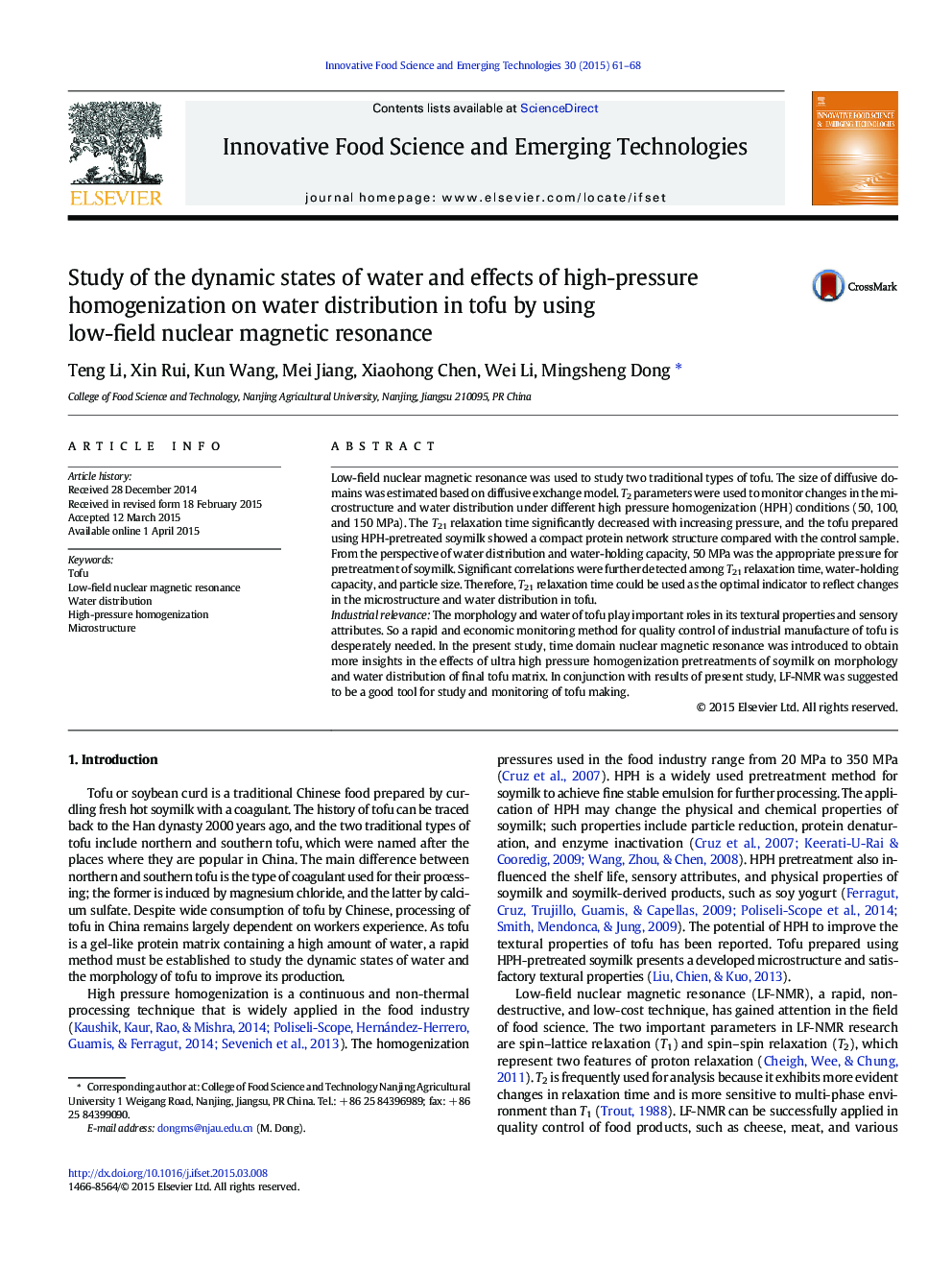| Article ID | Journal | Published Year | Pages | File Type |
|---|---|---|---|---|
| 2086432 | Innovative Food Science & Emerging Technologies | 2015 | 8 Pages |
•Low-field nuclear magnetic resonance was introduced for the elucidation of two traditional types of tofu.•The size of diffusive domains of two types of tofu was estimated on the basis of the diffusive and chemical exchange model.•The effects of ultra high pressure homogenization on water distribution of tofu were evaluated.
Low-field nuclear magnetic resonance was used to study two traditional types of tofu. The size of diffusive domains was estimated based on diffusive exchange model. T2 parameters were used to monitor changes in the microstructure and water distribution under different high pressure homogenization (HPH) conditions (50, 100, and 150 MPa). The T21 relaxation time significantly decreased with increasing pressure, and the tofu prepared using HPH-pretreated soymilk showed a compact protein network structure compared with the control sample. From the perspective of water distribution and water-holding capacity, 50 MPa was the appropriate pressure for pretreatment of soymilk. Significant correlations were further detected among T21 relaxation time, water-holding capacity, and particle size. Therefore, T21 relaxation time could be used as the optimal indicator to reflect changes in the microstructure and water distribution in tofu.Industrial relevanceThe morphology and water of tofu play important roles in its textural properties and sensory attributes. So a rapid and economic monitoring method for quality control of industrial manufacture of tofu is desperately needed. In the present study, time domain nuclear magnetic resonance was introduced to obtain more insights in the effects of ultra high pressure homogenization pretreatments of soymilk on morphology and water distribution of final tofu matrix. In conjunction with results of present study, LF-NMR was suggested to be a good tool for study and monitoring of tofu making.
